From the brutal murders of the Great Purge to the millions sent to the gulags, the NKVD made the Soviet Union a horrifying place to live.
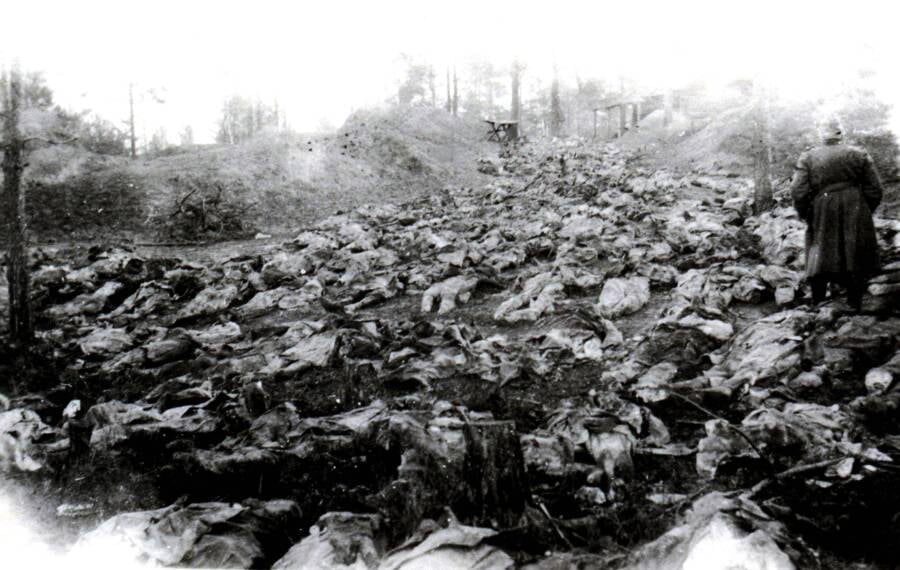
Photo 12/Alamy Stock Photo The aftermath of the Katyn massacre, where thousands of Polish prisoners of war were slaughtered by the Soviet NKVD.
Although many in the modern day associate the Soviet Union with Russia, it was one of the world’s largest multi-ethnic states, comprised of 15 republics. The Soviet Union’s first census, conducted in 1926, showed that there were 188 different ethnic groups in the country.
The collapse of the Tsarist regime and rise of the Bolsheviks initially seemed to signal an era of new support for ethnic minorities within the Soviet Union. The first Soviet leader, Vladimir Lenin, had taken an interest in the plights of minority groups and pushed policies of multicultural benefit known as “indigenization,” which included establishing autonomous territories, creating written languages, and forming native systems of education and the press.
Lenin believed that by empowering different ethnic groups, he could garner support for the Bolsheviks and help to integrate them into the Soviet system. Not everyone shared Lenin’s vision, however. His successor, Joseph Stalin, was more interested in centralizing power in Russia, and his regime viewed many groups, including ethnic minorities, with great suspicion. Instead of welcoming multicultural perspectives, he ordered forcible mass deportations, violent arrests, and wide-sweeping purges.
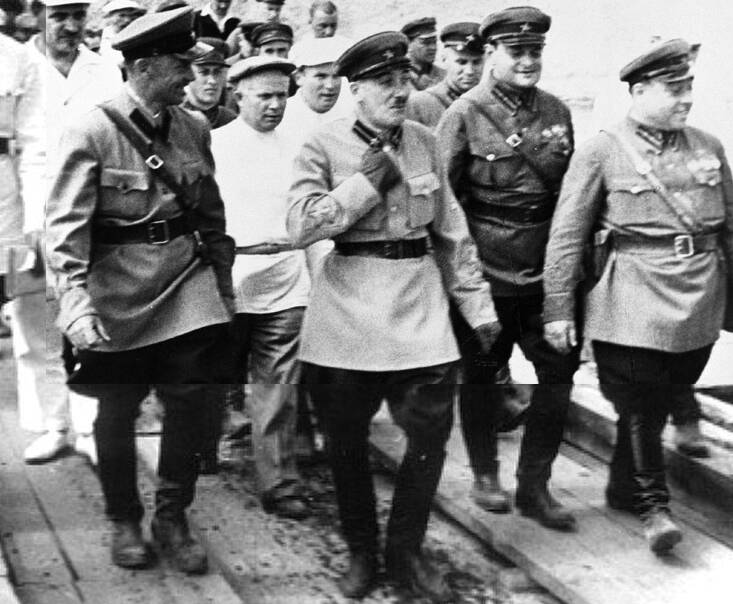
Public DomainGenrikh Yagoda, a chief of the Soviet NKVD, inspecting the construction of a canal in 1935.
These purges were ostensibly meant to eliminate dissenting members of the Soviet Union’s Communist Party — and anyone else who was a threat to Stalin’s power. Before long, however, victims included not only political rivals and critics, but also ethnic minorities, as well as artists, writers, academics, peasants, foreigners, and even senior military officials.
Stalin’s Great Terror (or Great Purge), as it came to be known, started in 1936 and ended in 1938, during which time at least 750,000 people were executed, with many survivors sent to the gulag camps, where they were forced to labor until they died of exhaustion, disease, starvation, or violence. To accomplish his deadly goals, Stalin employed his own secret police known as the NKVD, or the People’s Commissariat for Internal Affairs.
But the NKVD’s bloody work wasn’t limited to the Great Purge. Throughout World War II, the secret police agency continued to conduct massacres and deportations in Soviet territories, and it was also pivotal in stamping out any anti-Stalin resistance movements that remained in the country. In the end, it was one of the most feared and powerful institutions in Soviet history, lasting from 1934 to 1946, and paving the way for the future KGB.
The Downfall Of The Russian Empire And The Beginnings Of The Soviet Union
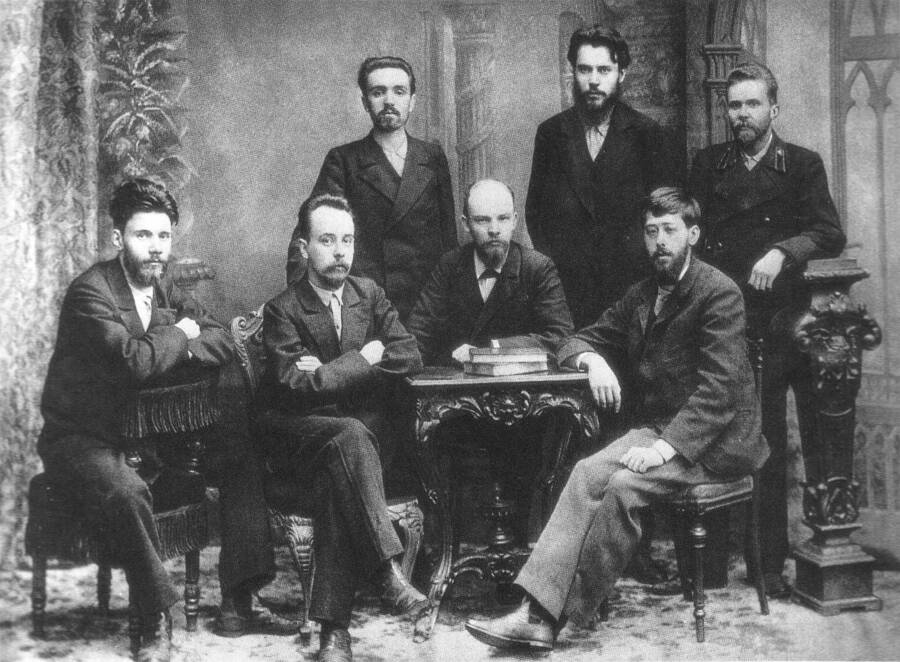
Public DomainVladimir Lenin (center) with other members of the League of Struggle for the Emancipation of the Working Class in 1897.
Before the Soviet Union, there was the Russian Empire, an autocratic regime that was ruled by tsars. By the early 20th century, though, support had decreased significantly for the last tsar, Nicholas II.
Russia’s involvement in World War I, for instance, led to catastrophic military losses, with hundreds of thousands of fatalities. Back home, the war effort had drained resources. Severe food shortages and economic turmoil plagued the country. This naturally led to worse living conditions for many Russians.
The people were rightfully angry. Strikes and protests became frequent, as workers demanded reasonable wages and better working conditions. The tsar’s political ineptitude did little to win the people’s confidence.
During the war, Nicholas II had chosen to take direct command of the Russian army. In his stead, he left his wife Tsarina Alexandra in charge of the government — but she was not alone. With her was the infamous “Mad Monk” Grigori Rasputin, a Siberian mystic who had somehow fashioned himself into one of the most influential men in the empire.
Their corruption and incompetence was obvious to nearly everyone.

Public DomainTsar Nicholas II and Grigori Rasputin.
Rasputin was murdered by a group of nobles in 1916, and in the next year, everything came to a head with the February Revolution of 1917, where mass protests and mutinies forced Nicholas II to abdicate, ending over three centuries of Romanov rule. A Russian Provisional Government was established, but it struggled to fully address the country’s pressing issues.
Amidst all the chaos, Vladimir Lenin, the leader of the Bolshevik faction, saw an opportunity. Although he had previously been exiled, he returned to Russia in April 1917 with the help of the German government, who hoped that Lenin’s presence would further destabilize Russia.
Instead, Lenin’s April Theses — calling for an immediate withdrawal from World War I, a transfer of power to the workers’ councils, the nationalization of land and banks, and the establishment of a proletarian government — earned him and the other Bolsheviks the admiration of the people. Later that year, in October, the Bolsheviks orchestrated a coup to overthrow the Provisional Government, and Lenin emerged as the head of the new Council of People’s Commissars. By 1922, the Union of Soviet Socialist Republics (USSR), or the Soviet Union, had officially been founded.
Inside Vladimir Lenin’s Plan For Indigenizing Soviet Territories — And How It Was Destroyed By Joseph Stalin And The NKVD
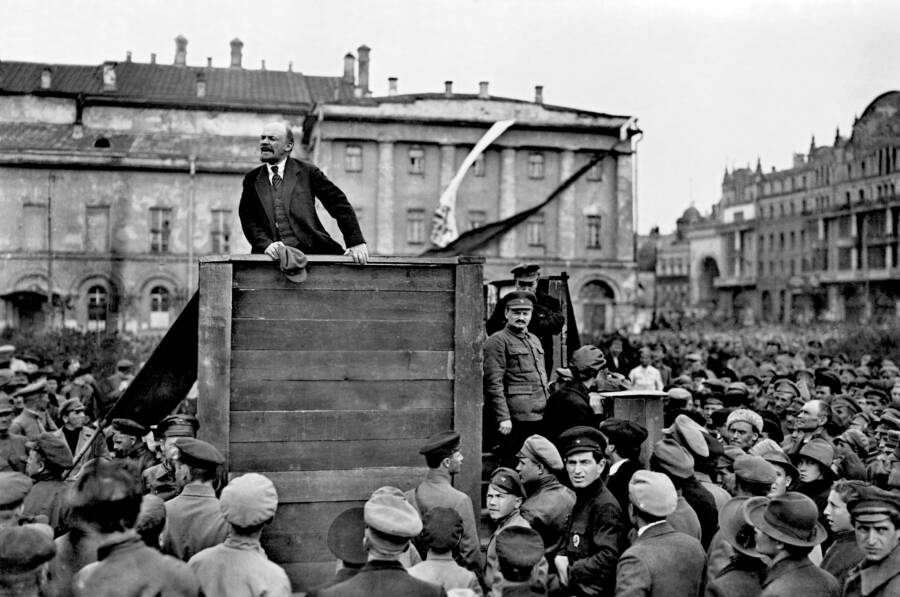
Public DomainVladimir Lenin addressing the Red Army in Sverdlov Square on May 5, 1920.
While Vladimir Lenin did work to follow through on his earlier declarations, he also suppressed any political opposition by dissolving the Constituent Assembly when it didn’t favor the Bolsheviks and establishing his own secret police agency known as the Cheka. The Cheka, and Lenin’s deployment of it, was just a hint at what the Russian secret police would become, however.
Some people regarded Lenin as a champion of the country’s workers, while others saw him as a dictator, using his position to take advantage of the power handed to him. Lenin himself even seemed to acknowledge his belief in the need for a “dictatorship of the proletariat.”
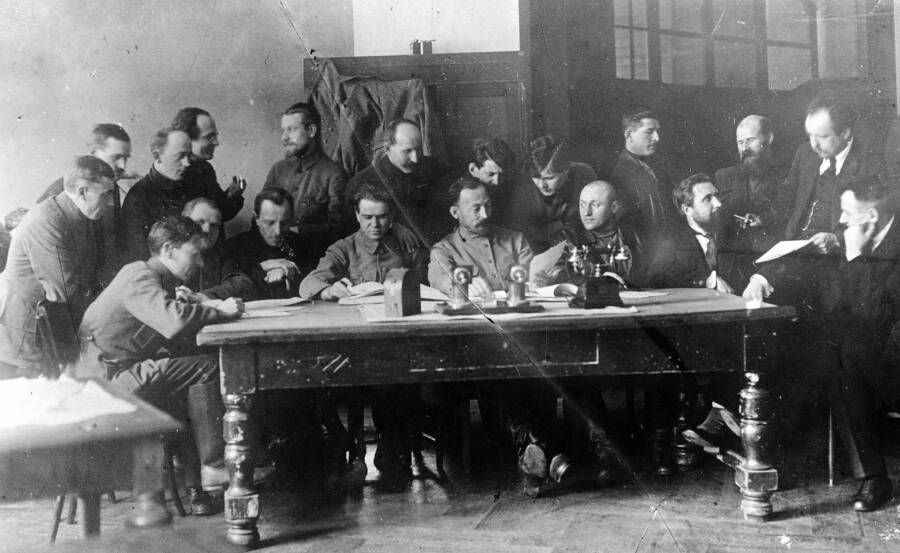
Public DomainCheka members at a meeting in 1919. This secret police agency helped pave the way for the future NKVD.
Of course, Lenin’s successor would go on to commit far greater sins. That man was Joseph Stalin, who was appointed as General Secretary in 1922. While Stalin initially presented himself as completely loyal to all of Lenin’s causes, his later actions would show that he was anything but.
According to the Hampton Institute, Lenin had recognized the importance of addressing the national aspirations of various ethnic groups to secure the Bolsheviks’ power. He felt it was valuable for different Soviet states to preserve their own cultures, that they had a right to self-determination.

Russian State Archive of Social and Political HistoryJoseph Stalin and Vladimir Lenin at Gorki, just outside Moscow, in 1922.
But when Lenin died in 1924 after suffering several strokes, the issue of succession became pressing. Near the end, the Soviet leader had expressed concerns about Stalin’s increasingly authoritarian attitude and had even reportedly recommended his removal from the position of General Secretary. However, Stalin had already been appointing loyalists to key positions within the Communist Party, and this network of support ensured Stalin’s rise.
Stalin initially continued some of Lenin’s policies, but by the early 1930s, it was clear that Stalin had his own agenda. In 1934, Stalin reorganized the Soviet Union’s secret police, which changed names numerous times, into the NKVD, ensuring that it would no longer be restricted by any laws or party control. This meant that Stalin could now use it as a direct instrument against anyone who opposed him or was accused of being disloyal to him.
Then, the Great Purge began.
How The NKVD Executed Stalin’s Great Purge
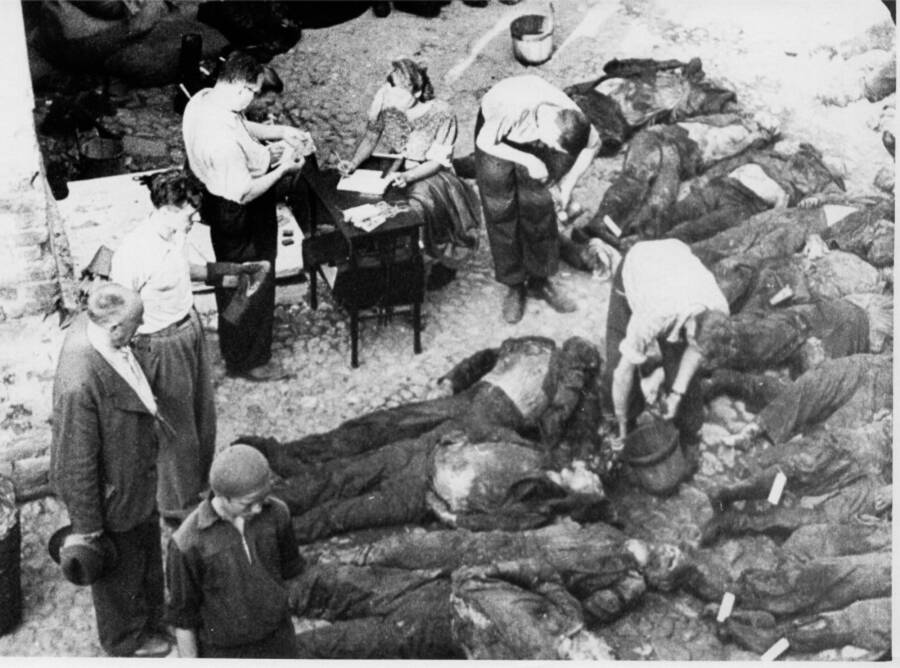
Wikimedia CommonsVictims of the NKVD in Tartu, Estonia. 1941.
Between 1936 and 1938, Joseph Stalin initiated the Great Purge, or Great Terror, a brutal campaign aimed at eradicating opposition within the Communist Party, the military, and Soviet society as a whole. Unlike his predecessor, Stalin believed that indigenization was a fool’s game.
Lenin had used the Cheka to repress his political opponents, yes, but his repression was mostly tactical and targeted. Lenin had aimed to eliminate specific threats to the revolution, especially enemies of the Bolshevik party. Stalin, on the other hand, orchestrated expansive purges that seemed to be driven by a pervasive paranoia and a desire for absolute control.
Some of the first victims of the Great Purge were Stalin’s political rivals and critics, but before long, artists, academics, scientists, writers, peasants, and ordinary people found themselves being accused of disloyalty. Many of these victims faced brutal deaths at the hands of the NKVD, or a torturous sentence of forced labor in the Soviet gulag camps.

Public DomainJoseph Stalin in Moscow in the 1920s.
According to a review published in The Historical Journal, Stalin instructed the NKVD to begin mass operations against various ethnic minorities in the summer of 1937, the largest of which was against the Polish population. A total of 139,815 Soviet Poles were arrested on Stalin’s orders and 111,071 were executed. The Polish people were not his only target, though.
A reported 56,787 ethnic Germans were also rounded up by the NKVD, 41,898 of whom were then killed on the order of NKVD chief Nikolai Yezhov. Additionally, 17,851 Soviet Latvians were taken prisoner, 13,444 of whom were executed. The NKVD similarly arrested over 12,000 Finnish people, executing 9,078 of them. Smaller, yet equally horrifying, operations were carried out against the Greeks, Bulgarians, Afghans, Romanians, and Iranians as well.
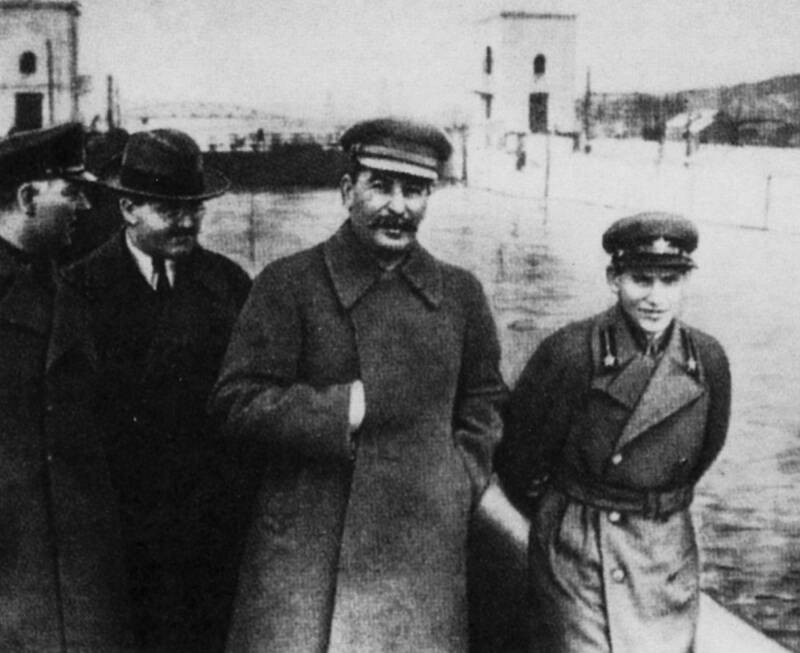
Public DomainJoseph Stalin photographed with Nikolai Yezhov, the head of the NKVD, at the Moscow Canal. Following the Great Purge, Stalin would have the photograph doctored and Yezhov removed — because Yezhov had been executed.
The terror continued in 1938, with subsequent orders to carry out mass operations against ethnic foreigners and Soviet citizens. Stalin justified these purges as “uprooting,” using the forestry term for when tree stumps and roots are removed from the ground as a forest is cleared. The implication was clear: Stalin wanted every person the NKVD arrested to be killed. At a certain point, he stopped masking his words.
“We will kill every enemy,” Stalin reportedly told his top NKVD officers back in June 1937. “If he is an Old Bolshevik, we will destroy his relatives, his family. We will destroy anyone without mercy who with his deeds or thoughts strikes a blow against the unity of the socialist state.”
Stalin and Yezhov worked closely to make this happen, sending each other as many as 25 secret messages per day with information about the purges. Yezhov justified the purges in much the same way Stalin did, claiming to be fighting against foreign intelligence or some anti-Soviet conspiracy.

Public DomainThe photo that Stalin had retouched to remove Yezhov after his execution, showing how Stalin tried to erase — quite literally — those who fell out of favor with him or fell under his suspicion.
But following Yezhov’s arrest in 1939 — by his successor Lavrentiy Beria — Yezhov admitted that many of the purges were conducted “only on ethnic grounds.” As for why other ethnic groups who weren’t meant to be targeted in certain campaigns were also arrested, he said, “There were no limits for the arrests within these operations, which means that the NKVD could operate with an unlimited number of arrested people. Therefore, I gave the order to the local chiefs of the NKVD to arrest as many people as possible.”
Though Yezhov tried to save himself during his interrogations by implicating dozens of alleged counterrevolutionaries, he ultimately failed. He was executed in 1940 after enduring the same trial process that he helped create — proving that even being close to Stalin wasn’t a guarantee of safety.
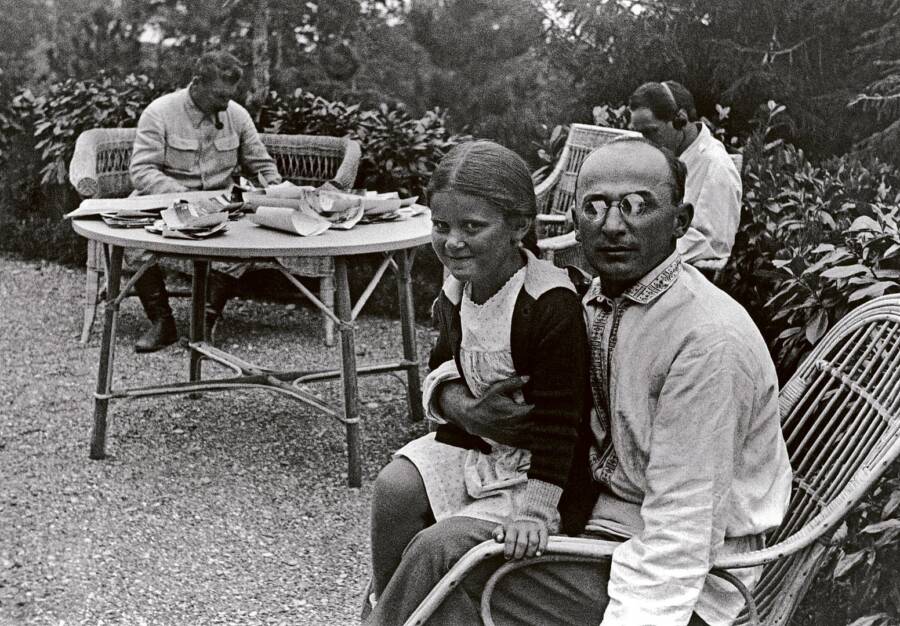
Public DomainNKVD Chief Lavrentiy Beria with Joseph Stalin’s daughter, and Stalin in the background.
Beria’s leadership of the NKVD started a relative easing of the purges, but he still used the organization to suppress dissent and manage the gulag system. Meanwhile, Stalin ran a long propaganda campaign to continue justifying his Great Terror. While it was eventually acknowledged that there had been “excesses” during the purges, which had killed hundreds of thousands of people, any mistakes were largely blamed on Yezhov.
The mass media used the same language that the NKVD used, especially the phrase “enemies of the people,” to justify the massacres. Stalin wanted people to believe that erasing different cultures would benefit all Soviets, even if they were members of said targeted cultures.
One report aimed at Soviet Finns read: “In fact the Finnish language does not allow our Finns to grow culturally together with all the Soviet people and take part in the development of the socialist culture. On the contrary, it paves the way for the development of a bourgeois culture in the spirit of nationalism. Ignorance of the Russian language puts Finns below Russians.”
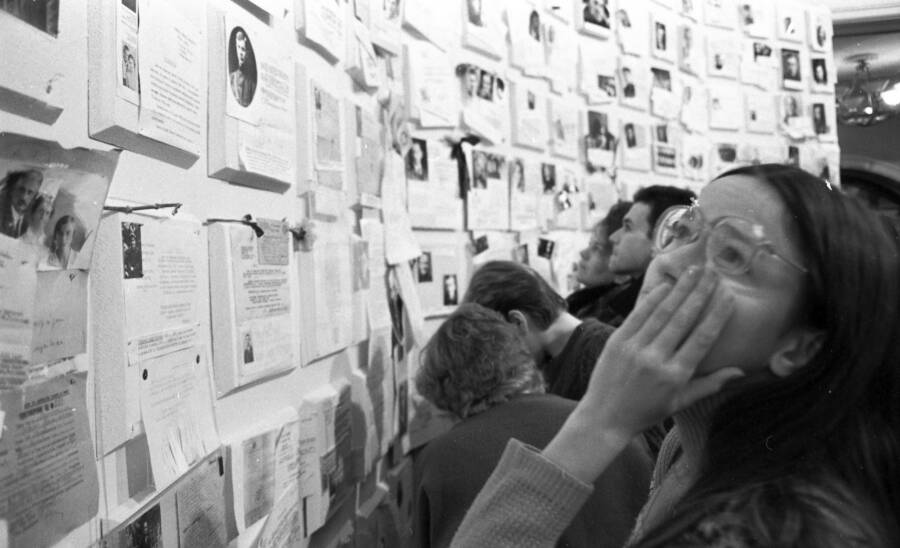
Wikimedia CommonsVisitors at the “Wall of Sorrow” in Moscow, at the first exhibition of the victims of Stalinism in 1988.
This campaign — and the ethnic cleansing that accompanied it — continued throughout World War II, while the NKVD was also involved in espionage, internal security, and collaboration with Allied intelligence.
After the war, the NKVD was soon dissolved, but new secret police agencies quickly took its place, and Stalin purportedly had plans to carry out a second Great Purge targeting Soviet Jews before he died in 1953.
But even Stalin’s death didn’t mean the end of the Soviet secret police, as just one year later, in 1954, the KGB was established to act as the “sword and shield of the Communist Party.” It would eventually go on to become the largest secret police organization in the entire world.
The most horrific information about its predecessor, the NKVD, remained largely hidden until the collapse of the Soviet Union in 1991. While the world certainly recognized the horror of Stalin’s Great Purge before then, the eventual release of official Soviet records illustrated just how systematic its orchestration had been — and why the NKVD was so feared.
After reading about the history of the NKVD, learn about Vasily Blokhin, Joseph Stalin’s favorite NKVD executioner. Then, go inside Stalin’s “Cannibal Island,” the Soviet gulag where prisoners were forced to eat each other.





